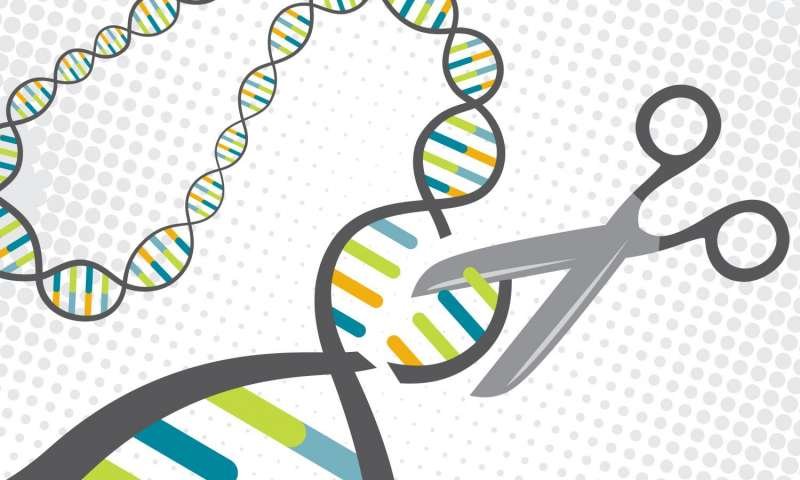What’s Genetic Editing?


What is Genetic Editing?:
Genetic editing is similar to the function of scissors in terms of what it does. Through genetic editing, scientists can cut the DNA at specific places and remove, add or replace any DNA as needed. Through genetic editing, scientists have been able to change physical traits, diseases, and any defects present in humans, plants, and animals. Scientists have been able to modify DNA however, not to the extent and precision as the present, through technological development and trial, this process began to be known as genetic editing.

History of Genetic Editing and DNA Timeline:
Early 1950s: The first x-ray image of DNA proteins is taken by scientist Rosalind Franklin. This image was taken through the knowledge of the science, crystallography.

1953: The discovery of the double-helix structure of DNA by scientists Watson and Crick.

1958: Test tube DNA is made for the first time, by a scientist named Arthur Kornberg who was awarded a Nobel prize for his discovery.
1967: DNA ligation is able to link the DNA fragments together. This process is crucial to DNA in general because it allows DNA strands to repair and replicate in any living thing.
1972: Recombinant DNA or rDNA is created, rDNA is used to bring together genetic material in a lab based setting from different origins.
1981: The First Transgenic Animal is created in a lab-based environment. This is the first genetically modified animal of its time.
1982: The first genetically modified drug insulin is created. This artificial drug was created due to the 56 million animals annually needed to provide real insulin.

1986: The first recombinant vaccine is approved for the prevention of HepatitisB.
1993: The principles of CRISPR technology are discovered.
1996: The first successful cloning of Dolly the sheep occurs. This was the first mammal to ever be cloned with the same genetic information.

2001: The first gene targeted drug therapy is approved. This drug was to target leukemia and is still used today as cancer treatment.
2010: The worlds first synthetic life form is created.

2012: The discovery of the CRISPR Engineering Tool as a result of previous principles discovered in 1993.
2013: CRISPR technology is used to treat brain disorders by using genetically modified neurons.
2015: The first GMO salmon fish was sold as a result of overfishing.

2018: The first human trials for CRISPR are approved. The trial is for a blood disorder.
Structure:
DNA or Deoxyribonucleic acid is a molecule that is formed by chains that form a double helix shape. The structure of DNA contains four bases, Adenine, Thymine, Cytosine, and Guanine. These four bases form two base pairs in which Adenine equals Thymine and Guanine equals Cytosine when all of these bases combine they form a DNA sequence. DNA makes up genes which are typically a characteristic passed down from parent to child. Through technologies such as CRISPR, scientists can alter these DNA sequences and modify the function of the genes present.

Genetic Editing technology Example+ Experiment:
CRISPR stands for clusters of regularly interspaced short palindromic repeats. It is a specialized region of DNA with two characteristics: the nucleotide repeats and spacers. The repeated series of nucleotides (the building blocks of DNA) are distributed throughout the CRISPR region. Spacers are fragments of DNA that are scattered among repeated sequences. This technology was first demonstrated through experiments by a team of researchers at Danisco, a food company. In a 2007 paper, the researchers used a bacteria which is commonly found in dairy cultures, as their model. They observed that after a virus attack, new spacers were added into the CRISPR region of the dairy-based bacteria. The DNA sequence of the spacers was the same in comparison to the parts of the virus genome. They also added and subtracted spacers by adding new DNA sequences that were viral. In conclusion, they were able to change the bacteria’s durability to an attack by a virus. Therefore, the researchers finalized that CRISPR technology plays a role in the regulation of bacterial immunity.

Ethical Implications:
Many technological developments have been made to genetic editing over the years however, there are many ethical concerns. Safety seems to be a concern due to any error that might occur, for example, editing the DNA in the wrong place and concerns about the future generation as a result of these modifications. Many people also agree that justice is an issue when it comes to this type of treatment because they believe that it would only be available to the wealthy and that this could affect the healthcare system because of this inequality.
Future for Genetic Editing:
The future for genetic editing seems overall positive. There have been many recent human trials for CRISPR gene therapy for diseases including Cancer, Hunter’s Syndrome, and Hurler’s syndrome. As technology begins to advance scientists maybe be able to edit traits such as intelligence and other personality-based characteristics.

Works Cited
www.risingtidebio.com
askabiologist.asu.edu
www.genome.gov
DISCLAIMER: The author is solely responsible for the views expressed in this article. The author carries the responsibility for citing and/or licensing of images utilized within the text.
